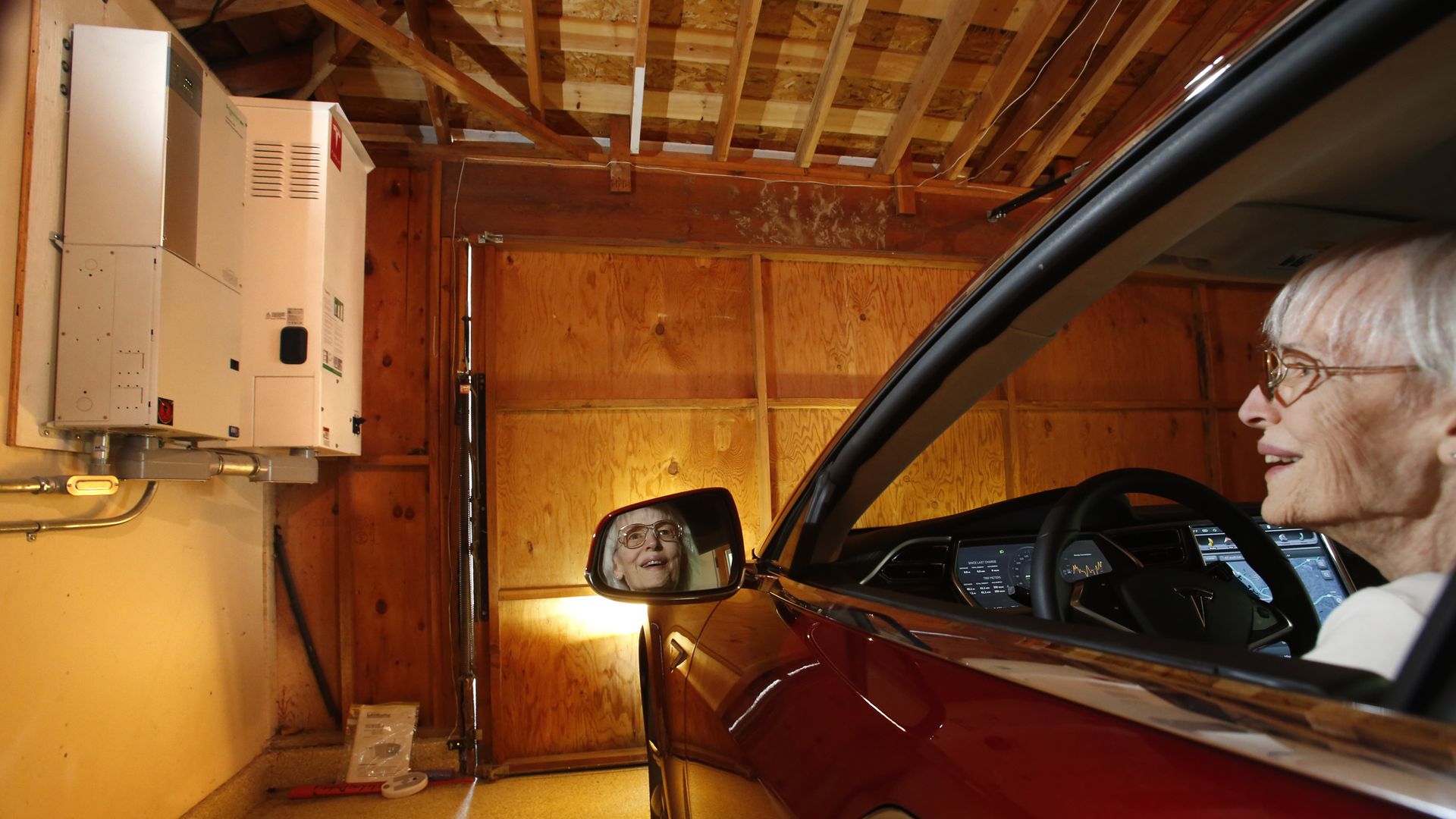
Installations of home energy storage system in the U.S. hit a record high in the first quarter of 2018, according to a new industry report. The new capacity of 36 megawatt-hours will sustain an estimated 4,000 home systems and adds to the 1,080 megawatt-hours installed in the past 4 years.
The big picture: Home energy storage systems commonly use batteries to store the electricity generated by rooftop solar panels, which can then be used during peak times and on demand to reduce utility costs or for backup power during inclement weather. The increasing penetration of residential and commercial solar installations has lowered energy demands on utilities. But the policies they have implemented to offset those losses have ended up making home energy systems even more attractive.
The background: As solar gained popularity over the past decade, and customers began generating their own energy during peak times (noon), peak-time electricity demand for utilities dropped. As a result, the utilities shifted the peak times and time-of-use (TOU) rates to later in the afternoon and early evening when solar wasn’t as effective. Utilities have also started to restrict net-metering compensation, which allows customers to offset public utility costs or sell surplus energy generated from home systems back to the public grid.
One third of the first-quarter 2018 installations were in California and Hawaii, states with aggressive and supportive policies for renewables. (California’s self-generation incentive program, for example, offers energy storage subsidies if installed with a solar panel system.) Both states are looking to revise net-metering restrictions and TOU rates, which would make home installations more appealing and affordable.
What’s next: As home energy storage systems proliferate, adding an electric vehicle to the mix would provide a trifecta of home renewables. Using stored energy generated from rooftop solar panels to power an electric vehicle could provide a model of fossil fuel–free living.
